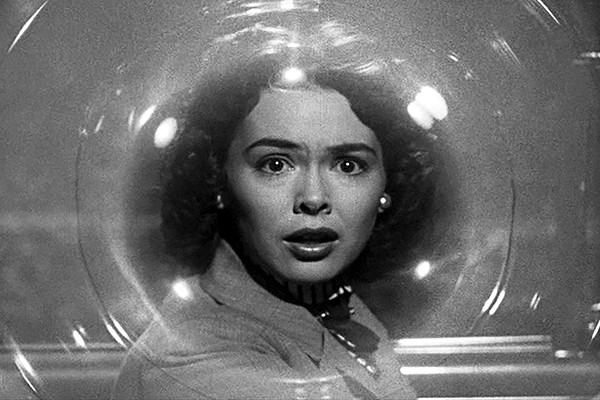The Summer Drive-In was built by Malco Theaters in 1950, on the cusp of the country’s big drive-in theater boom. At the height of their popularity, there were more than 4,000 drive-ins all over the country, comprising more than one quarter of all movies screens. Now, that figure is at 1.5 percent.
But the lost pleasures of the drive-in are not lost on Memphis filmmaker Mike McCarthy and Black Lodge Video proprietor Matt Martin, who, last year, started the monthly Time Warp Drive-In series, which brings classic films, both well-known and obscure, back to the biggest screens.
“We were accepted by a large part of the Memphis community,” says McCarthy. “[Malco Theatres Executive VP] Jimmy Tashie took a chance at, not only saving the drive-in, but plugging a program in that would use the drive-in for what its American function used to be.”
The eight-month series will once again run four-movie programs, once a month, each united by a theme, ranging from the deliciously schlocky to the seriously artsy. Last year’s most popular program was the Stanley Kubrick marathon, which ended as the sun came up. “Who says the drive-in is anti-intellectual?” McCarthy says.
The appeal of the drive-in is both backward- and forward-looking. The atmosphere at the Time Warp Drive-In events is relaxed and social. People are free to sit in their cars and watch the movie or roam around and say hi to their friends. It’s the classic film version of tailgating. “Matt from Black Lodge brought this up: It’s a kind of social experiment, like America is in general. It’s getting back to turntables and vinyl. Maybe it’s not celluloid, but it’s celluloid-like. You didn’t get to see that, because you weren’t born. But you can go back to that. It takes a handful of people who believe to make it happen. And that’s why Malco has been around for 100 years. They’ll take that chance.”
Malco’s Film VP Jeff Kaufman worked hard to find and book the sometimes-obscure films that Martin and McCarthy want to program. “I think we’ve got the material, and we’re trying to get things that people want to see, while kind of playing it a little dangerous around the edges,” McCarthy says. “This Saturday’s totally kid-friendly. We make a conscious attempt to show the kid-friendly stuff first, so people can come out with their kids.”
The series takes its name from the most famous song from The Rocky Horror Picture Show, so the opening program is, appropriately, movies that were mentioned in the show’s opening number, “Science Fiction Double Feature,” that also appeared on Memphis’ legendary horror host Sivad’s long-running Fantastic Features program. “We’re showing what many people believe to be the greatest film of all time, the 1933 version of King Kong,” McCarthy says. “It’s not the worst film of all time, which is the 1976 version of King Kong.
The granddaddy of the horror/sci-fi special effects spectacle films, King Kong has lost none of its power. It’s concise, imaginative, and best experienced with a crowd. The evening’s second film comes from 20 years later. It Came from Outer Space is based on a story by sci-fi legend Ray Bradbury and was prime drive-in fare. It features shape-shifting aliens years before Invasion of the Body Snatchers, 3D imagery from the original golden age of 3D, and a twisted take on the alien invasion formula.

It Came From Outer Space
The third film, When Worlds Collide, was made in 1951, but it doesn’t fit the mold of the sci-fi monster movie. Produced by George Pal, whose credits include the original film takes on War of the Worlds and The Time Machine, the film asks what would happen if scientists discover that Earth was doomed to destruction by a rogue planet, presaging Lars Von Trier’s 2011 Melancholia.
The evening closes with The Invisible Man, starring Claude Rains as the title scientist who throws off social constraints after rendering himself transparent. Directed by Frankenstein auteur James Whale, the film has been recognized as an all-time classic by the Library of Congress’ National Film Registry and will richly reward intrepid viewers who stay at the drive-in all night long.